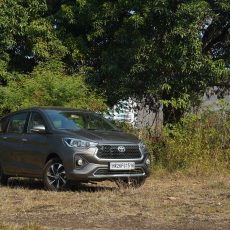The EQB is expected to be the most accessible electric Mercedes-EQ in India and also the only one that can seat seven. We got behind its wheel to explore the driving roads around Madurai.
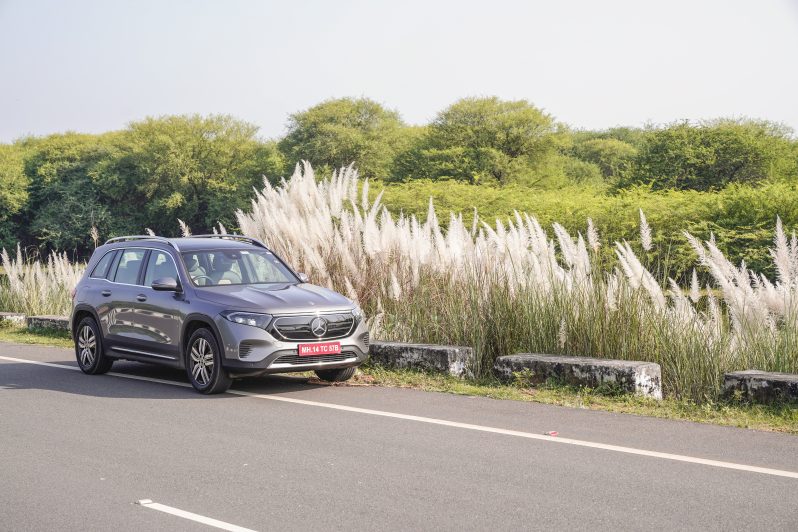
Story: Joshua Varghese
Photography: Sanjay Raikar
The EQB is based on the GLB, that much is obvious. In spite of such a close association, however, there are many things that give this electric car its own unique identity. In addition to being a seven-seater, the EQB could also be the most accessible electric Mercedes on sale in India. After reaching Madurai, I swapped the GLB for the EQB and immediately noted that the previous driver had used up nearly 50 per cent of the battery. Not what one wants to see when about to begin a drive in an electric car, eh? More on that later.
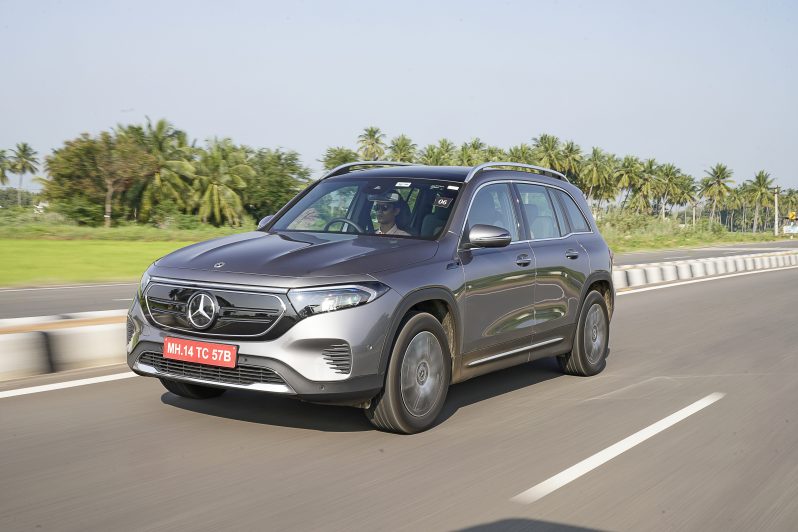
Since they share a platform, one may expect the EQB and the GLB to be dimensionally identical but that is not so. The EQB is 4,684 millimetres long, 38 mm more than its sibling which is because the front and rear ends have been reworked to optimize aerodynamic efficiency. The GLS influence is welcome here because it adds to the premium appeal of the car, especially in the exclusive Rose Gold colour. While the bonnet creases and the muscular shoulder-line remain intact, the front grille, bumper, and tail-end have been given the EV treatment along with the 18-inch wheels. One of the most distinctive exterior features of this car is the headlight strip that runs the width of the bonnet, giving it a cool and futuristic look.

Not much has changed in the cabin of the EQB as compared to the GLB because the front row continues to be as luxurious as it gets. The dual 10.25-inch touchscreens offer comprehensive information about the battery pack and its use in addition to conventional instrument cluster duties. The system also accounts for personal driving styles and environmental conditions, constantly updating the predicted range. With no engine to make noise and produce vibrations, the EQB’s cabin enjoys a refinement level that may be revolutionary for customers switching from an internal-combustion engine (ICE) car to this one. The silence in the cabin allows one to utilise the 10-speaker sound system to glorious effect. Other key features include MBUX capabilities, wireless smartphone charging, ambient lighting, and automatic air-conditioning. Highlighting the a-c vents in rose gold is a nice touch that adds to the charm of the rich interior. Once again, Mercedes have elected not to provide wireless smartphone connectivity and ventilated seats.

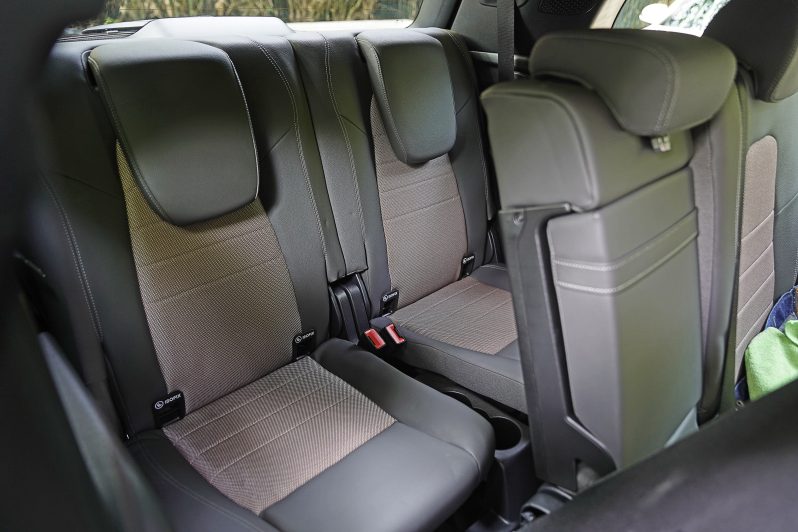
The second row of the EQB gets its own air-conditioning and the bench seat can be easily occupied by three adults. While it is comfortable, it does lag behind in the luxury quotient that one would associate with a Mercedes. For example, tall people will find the seats lacking in terms of under-thigh support. Similarly, the third row is good for children at best and I feel ingress and egress could have been made easier. On the bright side, both rows fold flat when needed, offering a truckload of luggage space, making the EQB the most versatile luxury EV in the country.
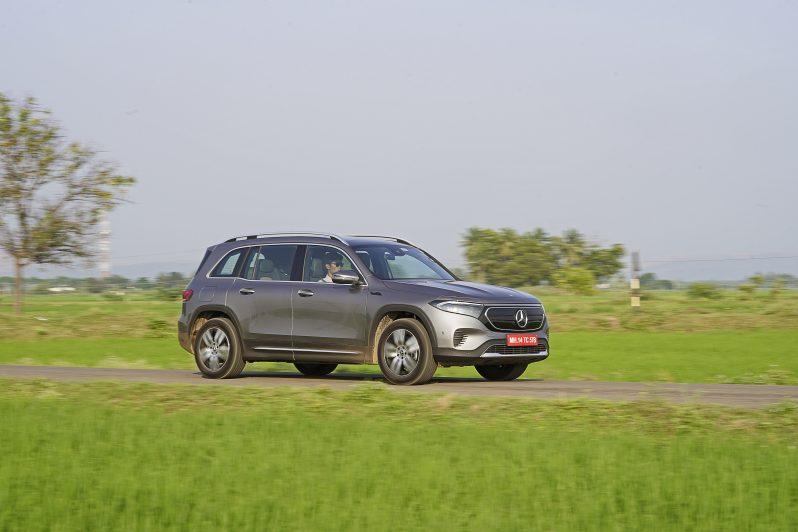
From the driver’s seat, it is difficult to believe that the EQB is a seven-seater SUV. The flat-bottomed steering wheel gives away its sporty intentions and under the bodywork is a 66.5-kWh battery that powers two motors. They have a combined output of 168 kW (228 hp) and a peak torque of 390 Nm. The EQB accelerates violently from standstill and responds to throttle inputs in a split-second, especially in Sport mode. The paddles behind the steering wheel allow the driver to cycle through the different modes of energy recuperation. At one extreme, there is almost no regeneration and it is very similar to an ICE car while the most stringent mode regenerates so efficiently that, with some practice, I was able to drive using just the throttle pedal to control the car’s pace.
Mercedes claim that this car has a range of 423 kilometres. We were unable to verify this claim due for want of time but, as previously mentioned, I got the car with just over 50 per cent charge left in the battery and after almost two hours of driving, there was never an instance of range anxiety. Credit for that is due to the realistic range computer and the efficient regeneration system. (I drove using the highest mode of regeneration most of the time.) A 100-kW DC fast charger is capable of charging the battery from 10 to 80 per cent in 32 minutes while an 11-kW AC charger takes six and a half hours to charge from 10 to 100 per cent.

Since the battery pack of the EQB is located so close to the ground and the weight of the car is distributed evenly, it corners as if it is on rails. In Sport mode, the steering, suspension, and power delivery complement each other so well that the result is a rewarding driving experience. The top speed is capped at 160 km/h and that seems like a smart thing to do because three-digit speeds are achieved quickly and with almost no effort. Interestingly, the alerts that go off at 80 km/h and above 120 km/h were not present in the EQB. Hey, no one is complaining.
In town, I would recommend Comfort mode because it offers a good balance of energy conservation and power when one needs it. Furthermore, Mercedes appear to have got the suspension just right with the EQB. It absorbs bumps with ease and does a good job of insulating the passengers from the discomfort that comes from harsh surfaces. Sudden demands for shedding speed are ably managed by the disc brakes and supporting electronic wizardry. A five-star NCAP rating should prove that no corners were cut when it comes to safety and airbags are available in all three rows.

At the end of my time with the EQB, I returned the car with a good 160 kilometres left on the clock and that shows immense promise for real-world range. What I liked best about this car is that it was just as luxurious as its sibling, the GLB, and never once caused me range anxiety. Furthermore, it was faster and handled better too. There is no doubt that this will be the most accessible EV yet from Mercedes-EQ but since this also comes as a completely built-up unit (CBU), a price tag in the range of Rs 70 lakh will not be surprising. The price was not announced at the time of writing this story. Of course, we look forward to subjecting this car to more extensive testing at a later date.
Watch the full video here:
Launch Update:
EQB 300 4MATIC: Rs 74.50 lakh
These are introductory ex-showroom prices.
Also Read: Mercedes-AMG EQS 53 4MATIC+ Charging Ahead with Speed




